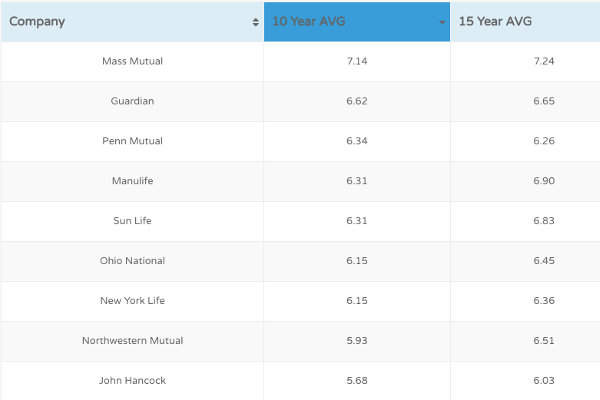In 2018, life insurance covered about 60 percent of all Americans in some way.
Life insurance covers a variety of costs associated with the death of a loved one. Between funeral expenses, loss of income, or other associated costs, life insurance can make a difficult time more manageable.
There are misconceptions about life insurance that can turn people away. However, there are additional benefits to holding a life insurance policy that can serve other purposes.
Some policies are eligible for a life insurance loan that can have numerous financial benefits.
A life insurance loan is a great alternative for those who may struggle with traditional loans. However, they also carry their own set of unique circumstances to consider. These often require an established policy with quite some time built into it, so it's best to begin your investment in a life insurance policy as soon as possible.
Before taking out any loan, it's important to review all of the pertinent information. Keep reading to learn more about how a life insurance loan works.
What is Life Insurance?
In the same way, you might purchase homeowners insurance to protect your house or car insurance to protect your car. Purchasing life insurance is one way to ease the burden on your family after your death.
While it may sound morbid, this can make an already difficult time easier to navigate.
Death can place a large financial burden on a family that is already suffering emotionally. Purchasing a life insurance policy ensures they will be well-taken care of in their time of need.
To purchase life insurance, you pay a monthly premium to your insurance company. In return, they will pay out a "death benefit" to your beneficiaries.
This means that the company will provide a lump sum payment to your designated family members after you die. There is no restriction on how to spend this money once it is paid out. In some cases, it can be tax-free.
The actual cost of the policy will vary on many factors. Age, physical health, and type of coverage are all contributing factors. But ironically, most people overestimate the cost of life insurance. There are various plans available, so it is important to compare options and determine which best fits your situation.
What Types of Life Insurance Are There in the Marketplace?
There are two main types of life insurance policy plans in the marketplace.
The first is a term life insurance policy. This is a more straightforward approach to life insurance. Term life insurance coverage expires after a given period of time.
There is no monetary value associated with this type of insurance€”so it is not eligible for loans against it.
On the flip side, there is permanent life insurance.
This is also known as "whole" life insurance, as it covers your entire life. This policy has a cash value associated with it. This number continues to accrue as long as you live.
There are multiple forms of permanent life insurance that govern the structure of your policy.
Permanent Life Insurance €” Universal
One type is universal life insurance. This policy pays out a tax-free sum of cash to your beneficiaries, also known as the death benefit.
The difference here is that you can use your policy's cash value (and the interest earned on it) to pay for coverage premiums. After death, the insurer pays out the remaining cash value as a death benefit.
Permanent Life Insurance €” Variable
Another form is variable life insurance. This is where a portion of your insurance premiums is invested; when this produces a positive return on investment, your policy's cash value increases.
However, if the market is not in good condition, it could affect your return. As such, the cash value of your policy may not increase steadily. There is more risk with this form, yet more potential for reward.
Components of Permanent Life Insurance
When considering life insurance from a financial position, it's also important to consider the three components that make up a permanent life insurance policy:
- The face value is what is normally paid as a death benefit to your beneficiaries.
- The cash value eventually replaces the face value most of the time and can increase the death benefit's value.
- Dividends are sometimes paid out by insurers when it actually costs less to insure you than originally predicted.
These factors come into play when considering taking out a life insurance loan. This will be discussed in later sections.
What Are the Risks of Secured Loans?
Generally speaking, when seeking out a loan, one typically goes to the bank. They might try another type of financial institution, as well. These sources rely on hard credit inquiries and stringent data calculations to determine your worthiness for a loan.
For secured loans, there are various forms of collateral used to assure the loan. This way, the bank has some way to recoup losses if you default on your loan.
For example, in seeking a secured loan, you may choose to take out a second mortgage. In this case, you are using your home as collateral. You may also put up your car, boat, or other assets to assure the bank you are worthy of the loan in question.
While these types of loans have their own benefits as well, they can be quite risky. If you cannot pay the loan back, you could lose your home or another major asset.
How Is a Life Insurance Loan Different?
But many people don't know they can borrow against their life insurance policies as well. While it carries its own risks, it may be a better option for those who do not want to take the chance of losing their home.
As previously mentioned, life insurance loans are only possible with a permanent life insurance policy.
Even still, not all policies will be eligible for this benefit. Your cash value must be high enough to qualify you for taking out a loan. In some cases, this can take upwards of ten years to establish.
If you are eligible for taking out a life insurance loan against your policy, there are many benefits available.
These loans do not actually withdraw from your life insurance policy. Rather, the cash value of your loan is used as collateral to secure the funding.
These loans are great alternatives for those who may struggle to qualify for traditional bank loans. Since you are using your life insurance policy as collateral, the creditor will not run your credit before issuing the loan.
Plus, it will not produce a hard inquiry to your credit which can also affect your score.
These loans can also be beneficial as they do not carry a payment schedule. There are still serious ramifications for defaulting on the loan, but it does not have the traditional repayment plan you might find with a bank loan.
Which Policies Can I Borrow From?
It's important to note the distinction between borrowing against a loan and withdrawing from a loan.
Withdrawing from your policy is similar to withdrawing from your bank account. You have the option to pay back what you took out, though there are often limitations to how much you can withdraw.
On the other hand, you can take out a loan with your policy as collateral. You will pay interest in addition to the principal loan payment. However, you may be able to receive a larger sum of money by taking this route.
Generally speaking, you can borrow against a permanent life insurance policy. A term life insurance policy is not eligible for this type of loan.
As previously mentioned, there is a cash value associated with your permanent life insurance policy. When you pass a certain threshold, you may be eligible to borrow against this. The exact value for this will vary by insurer.
This can be important if you have a variable life insurance plan. If you take out a life insurance loan under this policy, you may have a larger interest payment as the insurer may charge you an "opportunity cost."
This cost is the difference between your premiums' value and any earnings resulting in their investment compared to what you are paying back in loan interest payments.
What Can the Money Be Used For?
Life insurance loans are a bit more complicated than traditional bank loans when you consider what is at stake. However, there are no technical restrictions for what the money can be used for.
Often times, it is used in situations where a sum of money is needed quickly.
These loans are convenient as there is no set payment schedule like a traditional loan has. You can choose to pay it back monthly or even yearly.
Just be sure you are keeping yourself in a financial situation where you will pay the funds back. This way, you will not risk a lapse in coverage and the associated tax burden.
How Does Taking Out a Life Insurance Loan Help Fund a Retirement Plan?
As you grow older, your permanent life insurance plan does as well.
The cash value of this plan increases and can later be withdrawn and serve as retirement income. This money is tax-free when withdrawn, as long as it does not exceed the amount you have paid in premiums.
Conversely, you can also take out a life insurance loan against this fund. This can serve as retirement income, as well.
Technically speaking, you do not have to pay back these funds. The loan amounts and any accrued interest will be deducted from the amount paid out to beneficiaries as a death benefit.
What Are the Implementations of Borrowing Against Life Insurance?
As with any loan, there are important considerations to think about before moving forward.
While these loans may be suitable for those who do not qualify for traditional loans, they can also hinder progress. These loans will not help you increase your credit score the way other secured loans might.
With a life insurance loan, your life insurance policy is your collateral. This means that if you fail to make payments, your coverage can lapse in return.
This can result in a large tax burden. If your coverage lapses, the value of your policy is now considered income by the IRS. This means it is taxable.
In addition to reducing the cash value associated with your life insurance policy, defaulting on your loan can also reduce its face value. This means that when you die, your beneficiaries could receive a smaller death benefit.
Some people are given the option of adding an accelerated death benefit rider to their policy. This means that you can use some of the funds for your death benefit to pay for the care at a critically ill stage.
However, if you have already taken out a policy loan and have failed to pay the sum back, it will likely reduce the amount awarded for this purpose.
It may be wise to only use the benefit in a situation where you no longer need to cover the beneficiaries you purchase it for. It can also be a good option for those who do not want to put up other assets as collateral or struggle to qualify for traditional loans.
Be sure to carefully weigh all of your options before seeking out this type of loan.
Consider Your Own Life Insurance Loan Possibilities
When considering your options for life insurance, TopWholeLife can help. With this site, you can compare multiple carriers at once. This helps to simplify and streamline the process.
Plus, their expert advisers can help you decide if a life insurance loan is right for you.
For more information about the life insurance process, contact an advisor today.




